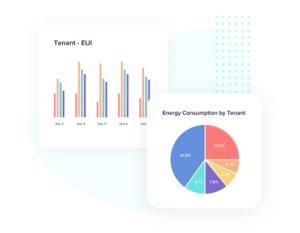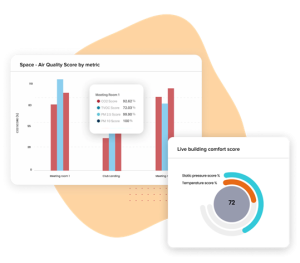- Published date:
- 28 August 2024
A Tech Roadmap for your Decarbonisation Journey - Part 2
By Prabhu Ramachandran,
CEO & Co-founder at Facilio
This is the second article in the series on designing a tech roadmap to accelerate your decarbonisation journey. In the first part, we looked at the different layers in the Energy Hierarchy, the advantages of adopting a platform-based approach and the first step in the tiered approach to unlocking energy efficiency
Step 2: Measuring Asset Performance & Fault Detection and Diagnosis (FDD)
Building upon the foundational level of "metering and measurement," the next step in your energy management journey emphasizes optimizing asset performance and implementing Fault Detection and Diagnosis (FDD) strategies. This level aims to enhance the operational efficiency of critical building systems and equipment, ultimately reducing energy waste and improving sustainability. Data Requirements at the Asset Monitoring & FDD Level: Real-time Equipment Data: Organizations need real-time data from various building systems and equipment to monitor asset performance effectively. This includes data from HVAC, lighting, elevators, and other crucial building assets. Sensor Data: Sensor data is essential for identifying deviations from normal operating conditions. Sensors can measure temperature, humidity, pressure, and occupancy, providing insights into equipment health and performance. Historical Maintenance Records: Historical maintenance records are valuable for assessing the equipment's maintenance history. This information can help identify recurring issues and areas requiring attention. Energy Consumption Data: Continuously monitoring energy consumption data helps identify anomalies and inefficiencies related to specific assets. It also provides a basis for measuring the impact of asset performance improvements on energy usage. Weather Data: Weather data is critical for contextualizing equipment performance. Variations in weather conditions can influence the energy efficiency of HVAC systems and other equipment, making weather data an essential component for accurate analysis. Case study A good real-world example is Limbach, a renowned service provider offering turnkey MEP solutions. They have deployed Facilio for their customers across 813 assets, including a school, hospital, museum, and news center. Their clients did not have access to any historical assets and building performance insights needed for strategic decisions. They relied on manual processes and data locked up in Excel sheets, which led to inefficiencies. With Facilio acting as an overlay platform, they could integrate tools for access control, CCTV, lifts, HVAC, meters, CaFM, visitor management, etc. They also had access to a centralized platform for portfolio-wide visibility and effective technician scheduling, streamlining maintenance and repair tasks, thereby reducing downtime.Step 3: Energy and Building Performance Optimization
When you have all the data you need at hand, the next step is to use those granular insights to benchmark and enhance your buildings’ energy performance. At this stage, organizations strive to fine-tune their energy efficiency strategies to maximize savings, reduce environmental impact, and enhance sustainability efforts. Optimization goes beyond monitoring and detecting faults; it focuses on continuously improving energy performance. Data Requirements at the Optimization Level: Historical Data: A comprehensive dataset of historical energy consumption, asset performance, and operational parameters is vital. This data provides context and a baseline for evaluating the effectiveness of optimization efforts. Real-time Data: Real-time data streams from sensors and monitoring systems are essential for understanding the current state of building operations. This data includes temperature, occupancy, equipment status, and energy usage information. Utility Rates: Information about utility rates, including peak demand charges, time-of-use pricing, and tiered pricing structures, is necessary for cost-effective optimization. Understanding how energy consumption patterns align with utility rates can lead to significant savings. Weather Data: Weather data remains critical to account for external factors affecting building operations. It helps adjust HVAC and lighting systems based on weather forecasts, ensuring optimal energy efficiency. Energy Models: Building energy models, often based on historical data and simulations, are valuable for predicting how changes in operations or equipment will impact energy consumption. These models provide a basis for making informed optimization decisions. Case study A case in point for optimization is British Land, a leading property company in the UK. They were facing challenges with data silos that hindered property and portfolio-level visibility. They also lacked contextual information on how their assets could be better optimized and delayed reporting resulted in fault detection delays and increased maintenance costs. After leveraging Facilio’s cloud-based connected operations solution, British Land achieved an awe-inspiring milestone—within just two months, they orchestrated a substantial 50% reduction in energy consumption. By aggregating real-time data across multiple sites, they were able to optimize factors such as the impact of IAQ when there was increased occupancy or meeting room bookings to optimize fan levels. They also created dashboards with critical KPIs that show the real-time performance of assets and FDD insights to identify anomalies in asset performance quickly, pinpoint the root cause, and provide suggestions for remedial actions.Designing your technology roadmap for decarbonisation
As you embark on your decarbonization journey, assess your position in people, process, and technology. These pillars form the foundation for effective energy management and sustainability programs. Here's how to evaluate and align each aspect to ensure a successful decarbonization strategy:- People: Stakeholder Engagement
- Process: Streamlined Sustainability
- Technology: Data Tracking and Behavioral Monitoring
Share article


